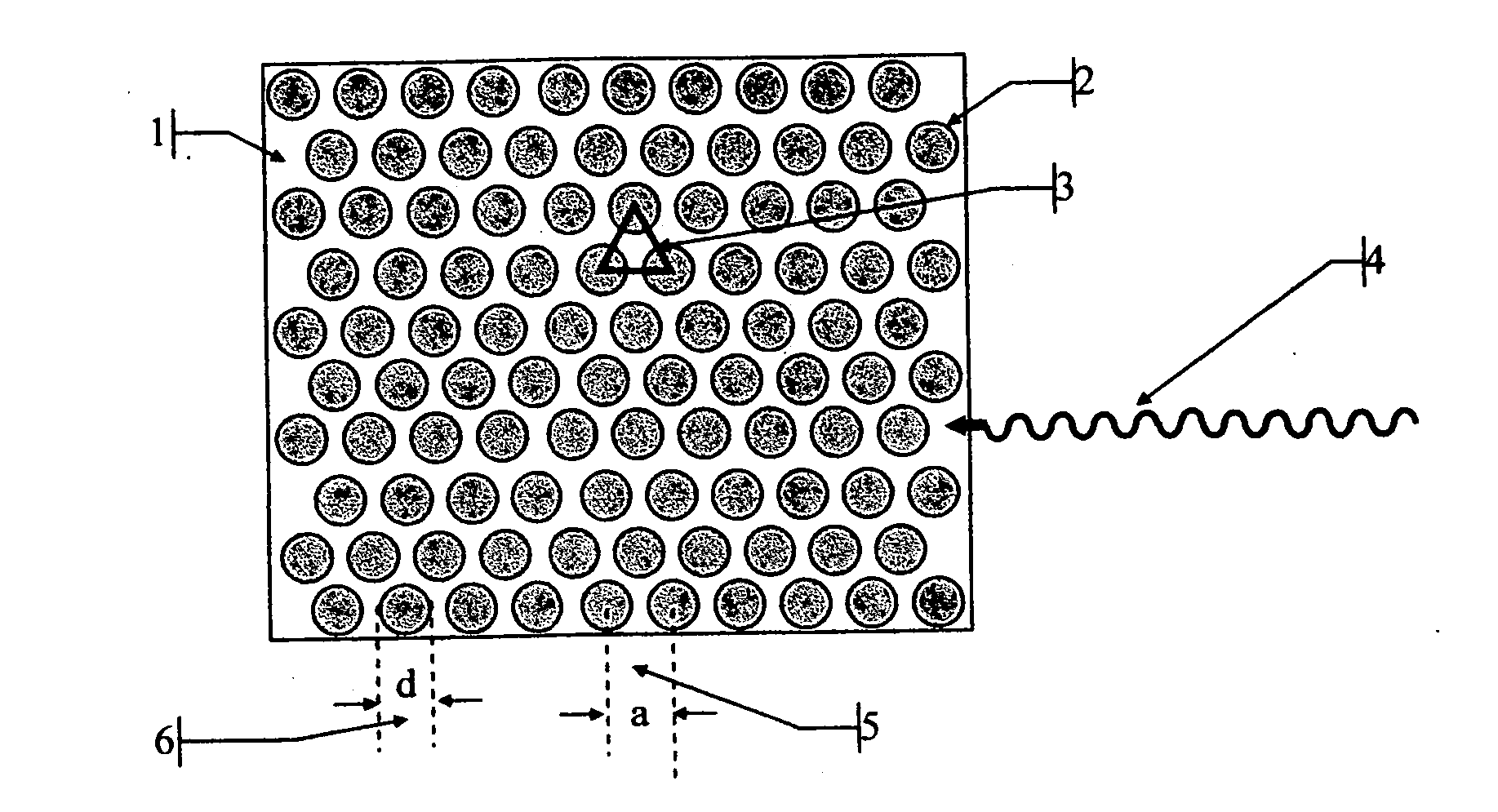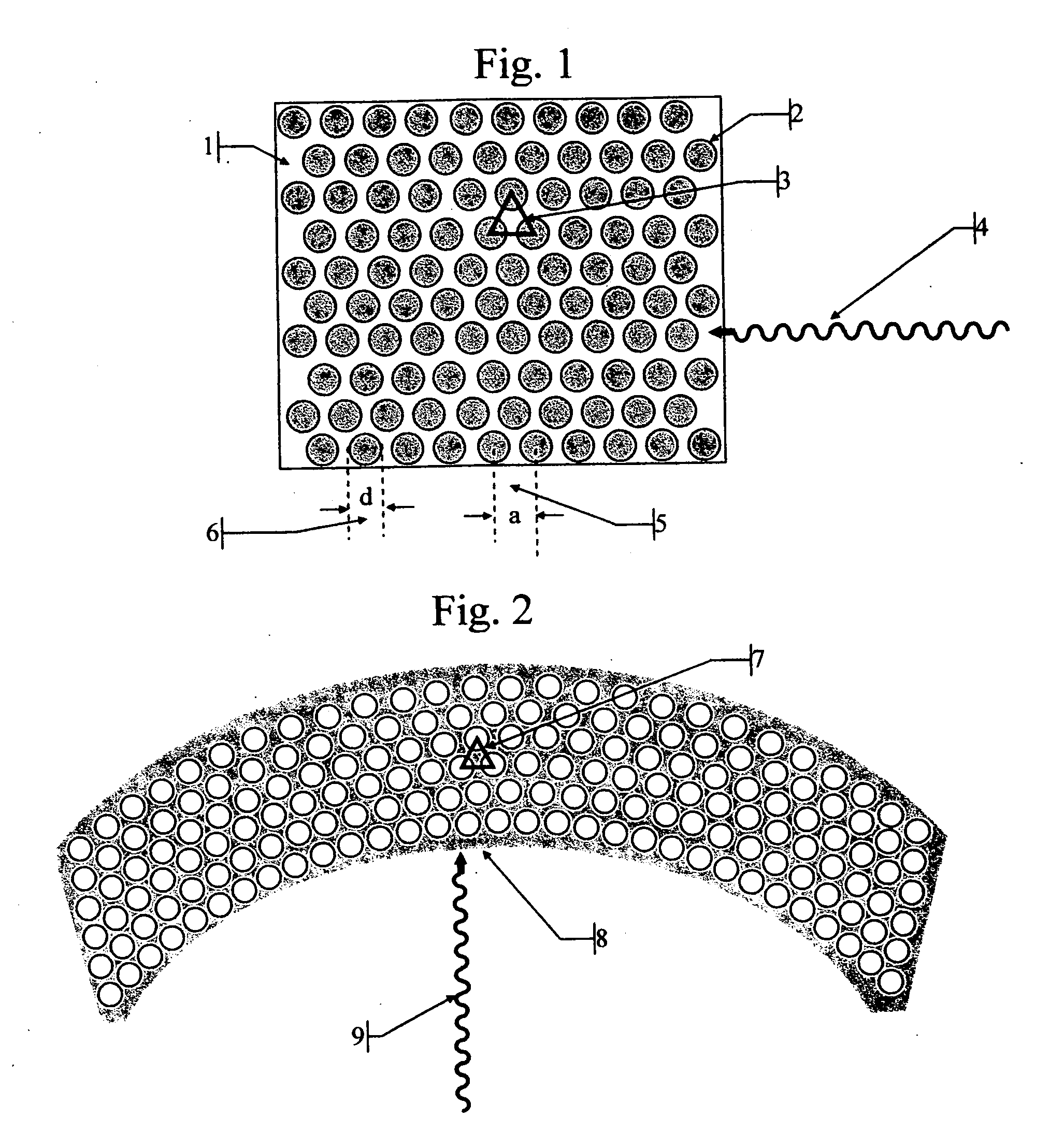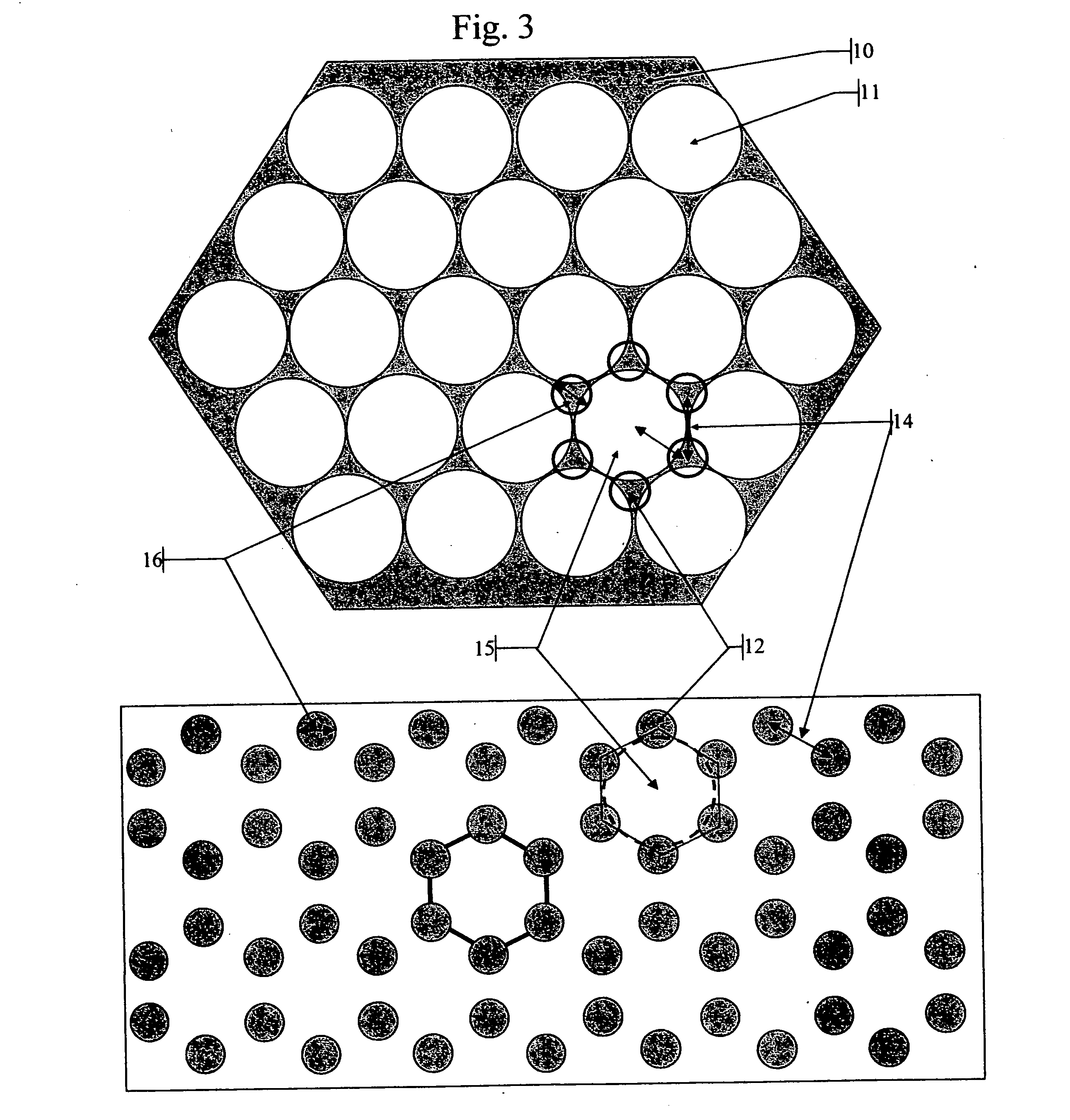Radiation detectors
a detector and radiation technology, applied in the field of radiation detectors, can solve the problems of difficult to locate the band gap analytically, crystals, and measurement of electron positions, and achieve the effects of improving volumetric image, improving spatial resolution, and thinning the sli
- Summary
- Abstract
- Description
- Claims
- Application Information
AI Technical Summary
Benefits of technology
Problems solved by technology
Method used
Image
Examples
Embodiment Construction
[0230]FIG. 1 illustrates a triangular periodic lattice of a 2 dimensional Photonic Bandgap Crystal Scintillator (PBCS) viewed from above. The structure may be interpreted as holes 2 (n0=1) in a high index matrix 1, for example in a CsI scintillator (n1=1.95) or as pillars 2 separated by air or aerogel.
[0231] The lateral dimensions of the columns or holes (d) 6 and the distance (a) 5 between them, together with their respective dielectric constants determine the behavior of such structures in respect to the propagation of electromagnetic radiation across the 2D plane. From an extrapolation of the behavior of one dimensional Bragg gratings, we can guess that destructive interference in two dimensional lattices too, will occur for approximately half-wavelength interference for distances between the holes (or columns) forming the lattice. As an incoming beam 4 will be refracted from each layer of columns (or holes), the distances it travels between successive refractions changes; as a ...
PUM
 Login to View More
Login to View More Abstract
Description
Claims
Application Information
 Login to View More
Login to View More - R&D
- Intellectual Property
- Life Sciences
- Materials
- Tech Scout
- Unparalleled Data Quality
- Higher Quality Content
- 60% Fewer Hallucinations
Browse by: Latest US Patents, China's latest patents, Technical Efficacy Thesaurus, Application Domain, Technology Topic, Popular Technical Reports.
© 2025 PatSnap. All rights reserved.Legal|Privacy policy|Modern Slavery Act Transparency Statement|Sitemap|About US| Contact US: help@patsnap.com



